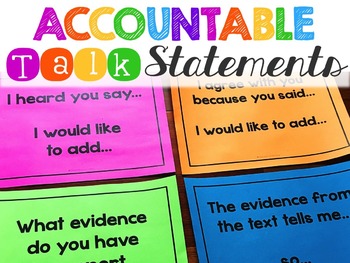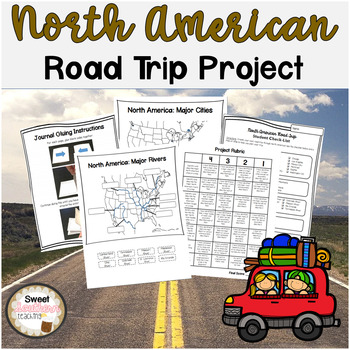While I've been thinking about posting this for about a week now, I've only come upon the time just now. My husband has been asleep all day after working a 24-hour shift, sleeping for 3 hours, then working another full shift. Poor hubby. :( All this to say, that I did not prepare and take pictures of any student work... so, unfortunately, you will have to just read through my descriptions. Sorry guys!
Goal for my next blog: pictures of student work!
This year has been off to a great start. I have a super sweet class and I've been crazy inspired for some reason. I've also been challenging myself to kick it up a notch and integrate more exciting activities, as opposed to, "Okay read this, and answer these questions. Then we will check your answers." BORINGGGG. Don't get me wrong, we still read passages and answer questions. It is totally necessary to practice answering text-based questions, especially for young learners like my third graders. If I had a dollar for every time I've said the words, "Use text evidence!" let's just say I wouldn't need a job anymore. Instead, I'm trying to incorporate more meaningful activities ALONG WITH the text-based questions.
Fortunately, our Wonders Reading Unit and Social Studies standards have lined up perfectly with the upcoming election next month. Last week we learned about the importance of voting and elections. Our differentiated Wonders small readers lent themselves to some great discussions about presidential elections.
Our comprehension strategy for the week was author's point of view (or author's opinion). I wanted to really challenge by kiddos to think deeply about the way our presidential elections work, and also do some reflecting on whether or not they agree with the way certain things are done.
To start with, we read our small readers and learned about how presidents campaign by giving speeches and running commercial ads. Then, we read about the presidential debates. Students had to come to the conclusion that this author felt that the presidential debates were informative and helpful to voters. We also continued working with author's point of view on a separate text from another author who thought that presidential ads talking poorly about the other candidate are misleading and not helpful. For the past few years, I have used this sticky note graphic organizer from Joanne Miller on TPT for organizing our text evidence on author's point of view. Not only do my students and I totally love sticky notes, but combining them with a graphic organizer is just pure bliss. Thank you, Joanne!
The next day, we set off to do some differentiated work on discussing our own point of view. Each group had a different activity, but I make sure to incorporate one thing into each of them: Socratic Seminar. This is where I give them a question, and then sit back and don't say a word. The students don't have to raise their hands, they simply have a group discussion about their ideas. We use accountable talk cards to help us agree and disagree respectfully. After I began implementing this, I never went back! Seriously, please try it. It's easier on you in the end, and it gives the kids a chance to actually talk! It takes a lot of reviewing expectations about group discussions, but once they get it - it's pure magic.
 |
| I bought my cards here. The kids love using them! |
Here's what we did for our differentiated activities:
1. For my lower babies, we talked briefly about whether we agreed or disagreed with this author's point of view. Next, we read a Time For Kids article about some third graders that turned an idea into a law. We used this to compare and contrast the way a president is elected, and the way these students were able to turn their idea into a state law. While I think it is important to do some deeper thinking, it was more important for this group to get some extra practice comparing texts, while also getting a preview on a government lesson we had coming up.
2. For my on level kiddos, we tried out an activity that I found on Pinterest called Tug-of-War. I LOVED this activity and my kids have been begging to do it again ever since. How it works, is you have an open-ended question/statement in the middle of the board. Our question was, "Do you agree that presidential debates help voters decide who to elect?" Then, you have each student come up with as many reasons/arguments for each side, write it down on a sticky note, and place it on either side of the argument. I absolutely love how this activity forces the students to think about both sides of the argument. After everyone finished we had an open discussion about what we thought. The discussion was so rich and deep after having students think about both sides of the argument. I congratulated them on their hard work and let them know that there are many adults that aren't even capable of doing what they just did! HA!
 |
| Here is where I found this amazing idea! |
3. For my higher group, we had two different activities going based on their opinion. First, we had an open discussion about whether or not we agreed with the author's point of view. Then, I split the group in half based on these opinions. For those students that agreed that presidential debates were helpful, I had them create a list of interview questions they would like to give our current candidates to answer during a debate. For those students who disagreed, I had them write a letter to our government explaining why they thought the debates were not helpful AND they had to come up with an alternative solution for the candidates to participate in that would be helpful for voters.
At first, I was nervous about these assignments because I wasn't sure if it would be a bit over their heads. Thankfully, I was wrong! I was blown away by some of the questions that they came up with for the candidates. Many involved environmental issues, education, and even tax questions! I was equally as amazed by what my other students came up with for alternative ideas. My favorite included having the candidates answer the questions in a separate room from each other so that you could actually hear what each of them has to say without any criticism or interruption from the other.
After leaving school that day I was confident that my students had taken a step towards being open-minded and thoughtful citizens.When you give them the platform to dive deeper into things like elections, it's amazing to hear their ideas and thoughts on topics that adults can't even agree on.
Before I go, here is another one of my proud creations I've had pop into my inspired brain this year! Head to my TPT store and check it out! <3

Before I go, here is another one of my proud creations I've had pop into my inspired brain this year! Head to my TPT store and check it out! <3

